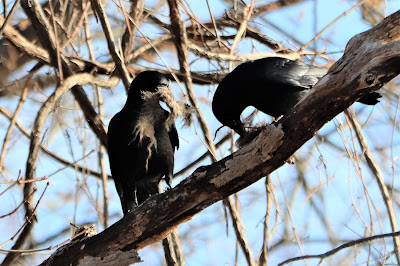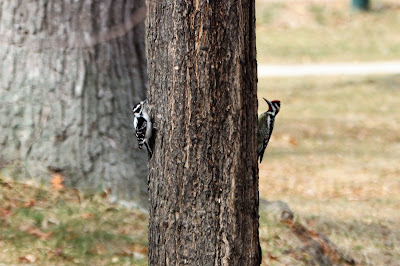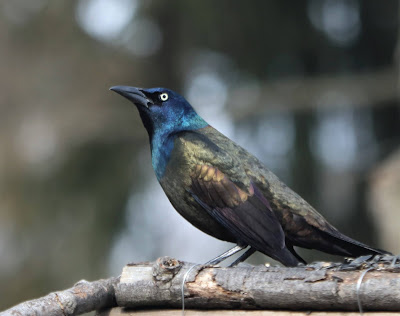Nest Building:
I found a pair of "Bearded" American Crows today. I'm
pretty sure there's no such species, but their beaks were stuffed
so full of plant material it looked like they had forgotten to shave!
2 Turkey Vultures ignoring air traffic controller warnings!
Look up on a clear day and you may see Turkey Vultures soaring through the air, riding on the thermals. The Turkey Vulture is a scavenger and feeds almost exclusively on carrion. It finds its meals using its sense of smell, flying low enough to detect the gasses produced by the beginnings of decomposition. They have flat feet that are relatively weak and poorly adapted to grasping. They don't kill their food, but eat it once it is already dead. (Canadian Raptor Conservancy)
A pair of Eastern Bluebirds have returned to Canatara Park. The male sat still on a branch for a few moments to have his picture taken.
Bloodroot is starting to peek through the forest floor. The roots of this plant are extremely poisonous although Native Americans have used it for medicinal preparations and as an insect repellent. The red juice from the plant has also been used as a dye for clothing and for decorating skin, various tools and household items. (Canadian Wildlife Federation)






















































